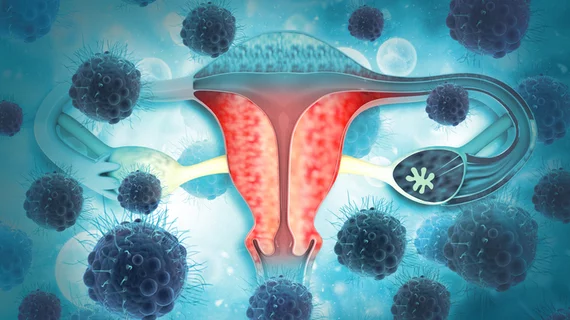Implementing structured radiology reporting via O-RADS boosts patient, referrer satisfaction
Implementing standardized, structured reporting using the Ovarian-Adnexal Reporting and Data System, or O-RADS, can boost both patient and referrer satisfaction, according to a new study published in Academic Radiology [1].
Cancer is one of three conditions accounting for nearly 75% of diagnostic errors, with quality of communication between radiologists and others stakeholders an important factor, experts noted. Researchers recently set out to measure how O-RADS could help address this issue, analyzing outcomes both before and after its implementation.
They produced promising results, with both patients/caregivers and referrers rating the structured reports as clearer and more satisfactory.
“We found that implementation of this type of reporting, specifically using O-RADS MRI, could be done successfully and improved communication between radiologists, patients/caregivers and referrers,” lead author Sungmin Woo, MD, PhD, an assistant professor of radiology with NYU Langone Health, and colleagues wrote Sept. 1. “Although further validation is warranted, the results of our study suggest that based on the example of O-RADS MRI, structured and standardized radiology reporting may be useful not only for decreasing diagnostic errors but also for enhancing diagnostic excellence by improving communication among stakeholders, especially in cancer care—one of the three medical domains associated with the most diagnostic errors.”
For the single-center study, each MRI report was dictated by 1 of 8 fellowship-trained radiologists. Before the change, pelvic MRIs performed to characterize indeterminate adnexal masses were reported via a template in which anatomic locations were listed as headers. Under each of those, there was a space for radiologists to describe any relevant findings via “free text.” Beginning April 1, 2021, the institution shifted to structured reporting using the recently introduced O-RADS MRI—a five-tiered risk stratification system for assessing the likelihood of ovarian malignancy.
The study sample included 123 imaging reports from before the change and another 119 afterward. Woo et al. surveyed 20 patients/caregivers and six gynecologic oncologists to gather their feedback on the switch. The patient group considered structured reports clearer (p < 0.001) and more satisfactory (p < 0.001) than the unstructured alternative. However, interpretability did not improve (p = 0.14), with 28% of reports considered difficult to read before the change compared to 38% after O-RADS implementation.
Meanwhile, referrers deemed the structured reports as clearer, more satisfactory and easier to interpret (p < 0.001). O-RADS MRI also notched an area under the curve of 0.92, sensitivity of 0.81 and specificity of 0.91, the authors reported.
One “important finding,” Woo and colleagues contended, was that O-RADS had little impact on patients’ ability to interpret reports. This could be attributed to several factors. Patients and caregivers typically have no training on interpreting medical jargon used in the reports, regardless of their structure. In addition, the O-RADS MRI template was created using feedback from radiologists and referring providers, but not healthcare consumers.
“This points toward a few important future directions with regard to radiology reporting, especially considering the changing landscape with the 21st Century Cures Act,” Woo et al. wrote. “Given the differences between referrers and patients/caregivers, there may be a need for different types of radiology reports to be directed to them—the standardized and structured report using lexicons to the former and a more ‘patient-friendly’ report (or even other means of communication) using lay language to the latter.”
Read more from the analysis, including potential limitations, in Academic Radiology at the link below.

